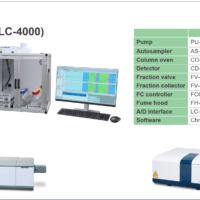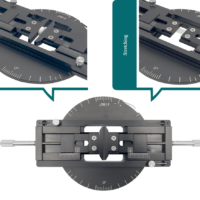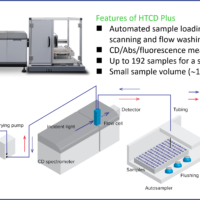Introduction
pMAIRS (p-polarized Multiple-Angle Incidence Resolution Spectrometry)1)-4), was invented by Prof. Takeshi Hasegawa of Kyoto University, a new analysis method for studying the molecular orientation of thin film materials used in several fields such as liquid crystals, organic devices and fibers.
Conventionally, Transmission and RAS (Reflection Absorption Spectroscopy) measurements have been used together for the analysis of molecular orientation, differences in vibration in surface-parallel direction, perpendicular to incident light (in-plane, IP) and vibration in surface-normal direction, parallel to incident light (out-of-plane, OP). However, this method cannot be used for some samples because the metal substrate which is necessary for RAS measurement may affect the molecular structure of thin films. In addition, non-metal substrates are also needed separately for transmission measurement.
On the other hand, since MAIRS is a method for analyzing molecular orientation by transmission measurement using incident light at several different angles, the substrate required is non-metal to allow transmission measurement. Generally in transmission measurement in which the incident light is perpendicular to the sample plate, the spectrum obtained is due only to the molecular vibration in the in-plane direction, when the transmission measurement is made by changing the incident angle, the obtained spectrum will be expressed as the summation of the in-plane and out-of-plane vibrations, and linear unresponsive components such as noise. As shown in Fig. 1, MAIRS measurement enables to acquire simultaneously spectra of vibration of molecules oriented in in-plane direction and out-of plane direction (sIP, sOP) by extracting components of only in-plane and out-of-plane vibration from single beam spectra (S measurement) at each incident angle using a regression matrix (rIP, rOP) which shows the ratio of in-plane and out-of-plane vibration. In the MAIRS method, in which quite small change in the peaks at each incident angle must be analyzed, a very high precision measurement is required.
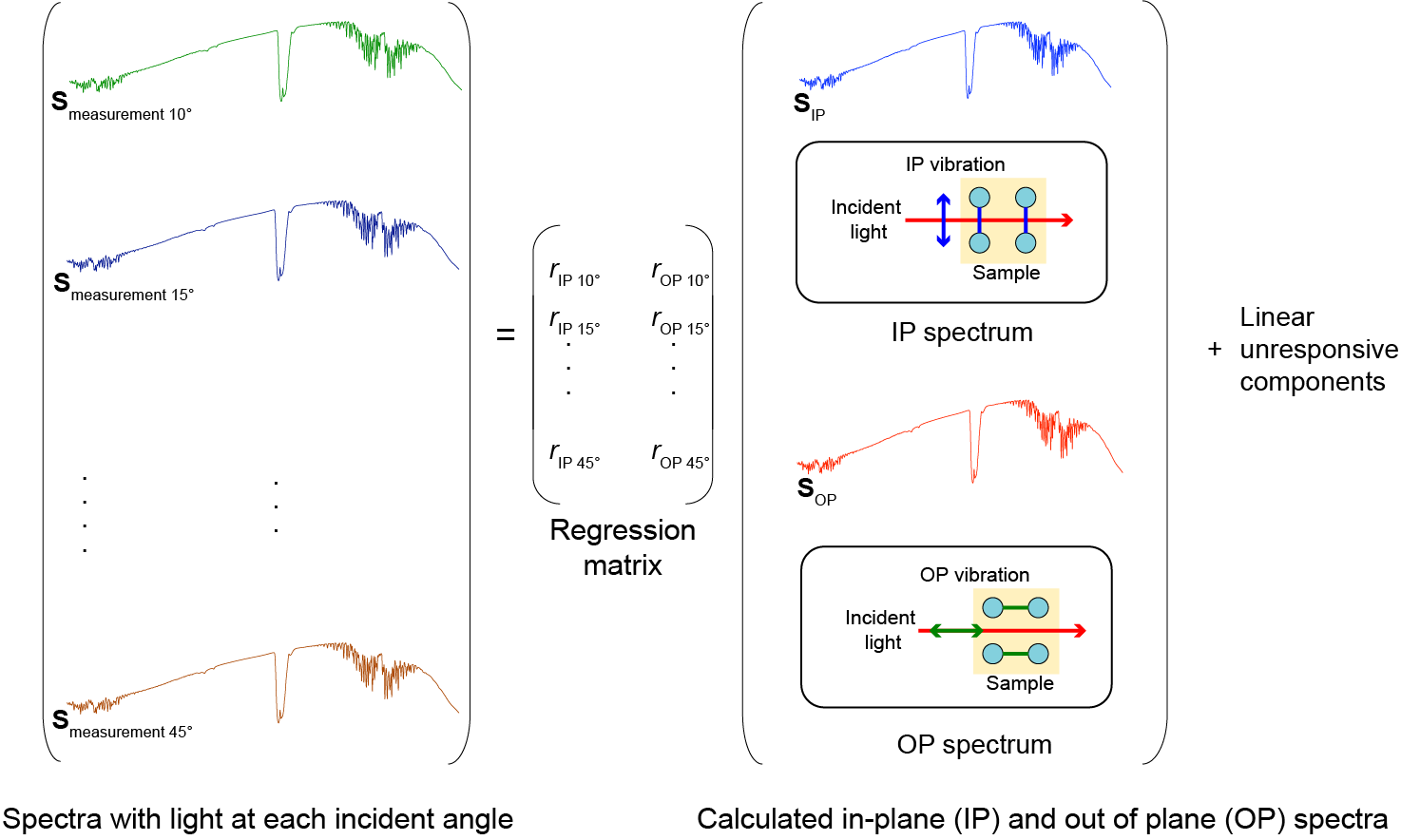
Figure 1. Outline of MAIRS measurement
The AM-4000 MAIRS accessory (Fig. 2) includes a unique design stage with compensation plate as standard and can be used with a full vacuum FTIR spectrometer (FT/IR-6000FV series), assuring very high quality spectra. In this article, we report the analysis of the molecular orientation of a Langmuir-Blodgett (LB) film using the AM-4000 automated pMAIRS measurement unit.
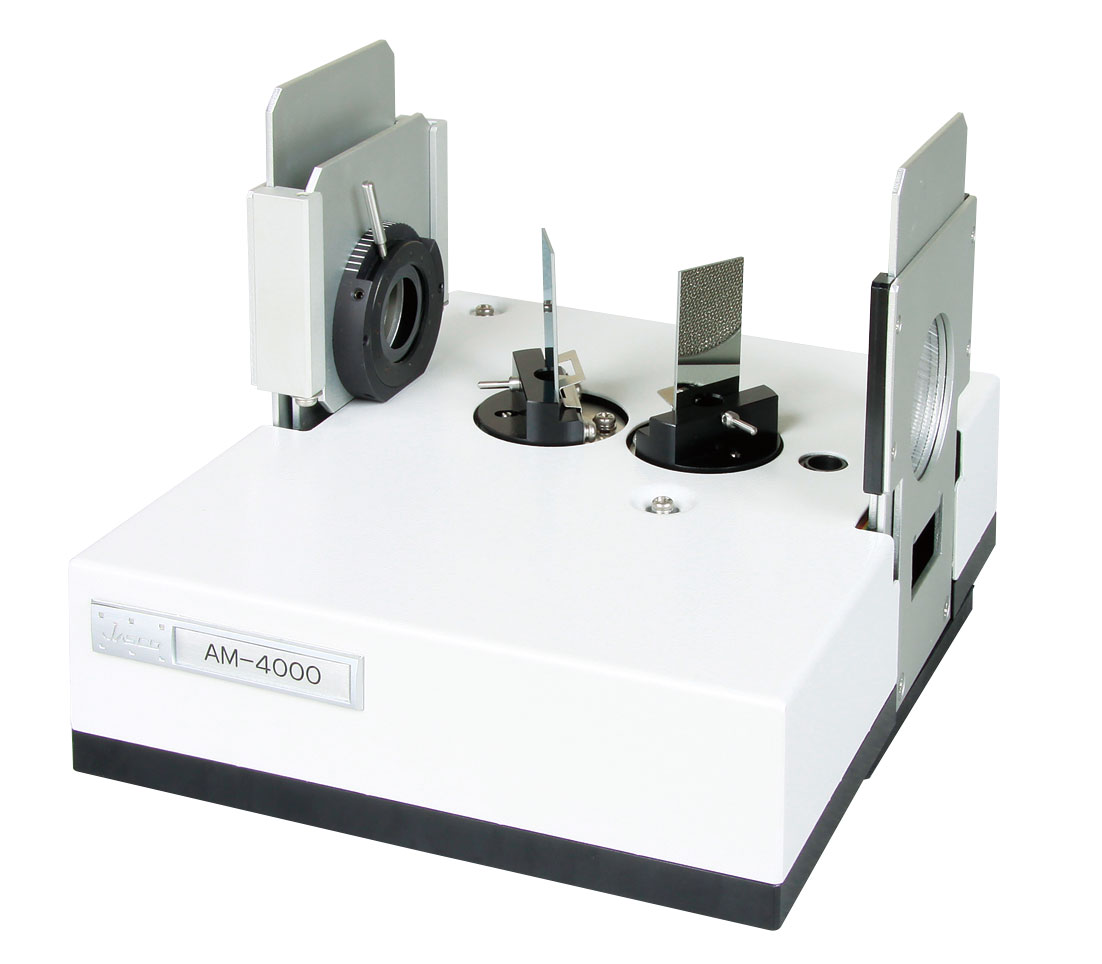
Figure 2. Automated pMAIRS measurement system
Features of the AM-4000 Automated MAIRS Measurement System
The AM-4000 uses two electrically driven symmetric stages for rotation. This allows the measurement of the sample with one stage and the compensation plate on the other (compensation plate stage) so that the light axis shift due to obliquely incident measurement can be corrected for. This makes the AM-4000 very effective for measurement when using a small aperture and a detector with a small acceptance surface. In addition, Spectra Manager™ controls the stage automatically, and includes IP and OP spectra calculation and orientation calculations of each molecular vibration, as standard.
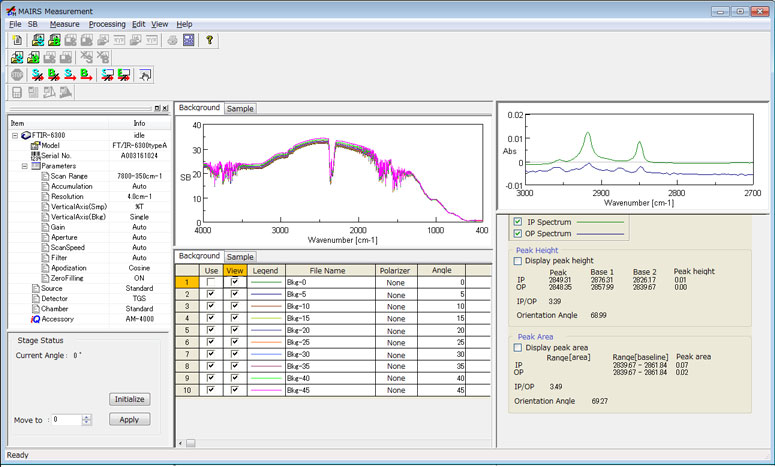
Figure 3. pMAIRS measurement program
Experimental
In order to analyze the orientation of alkyl chains on an LB film consisting of 5 layers of cadmium stearate on both surfaces of a Ge (n=4.0) substrate, the measurement was made using the AM-4000 automated MAIRS measurement unit with light at several incident angles. As a compensation plate, a Ge substrate of the same size as the sample plate was used. By using a compensation plate, the light axis can be corrected to the standard transmission measurement position even with an obliquely incident angle but not perpendicular to the substrate.
Measurement conditions
Method: MAIRS Method
Resolution: 4 cm-1
Accumulation: 128 x 4
Detector: MCT-M
Measurement Angle: 10 – 45 degree (7 degree increments)
Measurement Sample: Cadmium stearate film on Ge substrate (5 layers on each surface)
Keywords
pMAIRS, p-Polarized Multiple Angle Incident Angle Resolution Spectroscopy, thin film, FTIR, Langmuir-Blodgett
Results
IP and OP spectra were calculated from the measured spectra at each incident angle in the range 3000 – 2800 cm-1 in which C-H vibration peaks are observed (Figure 4).
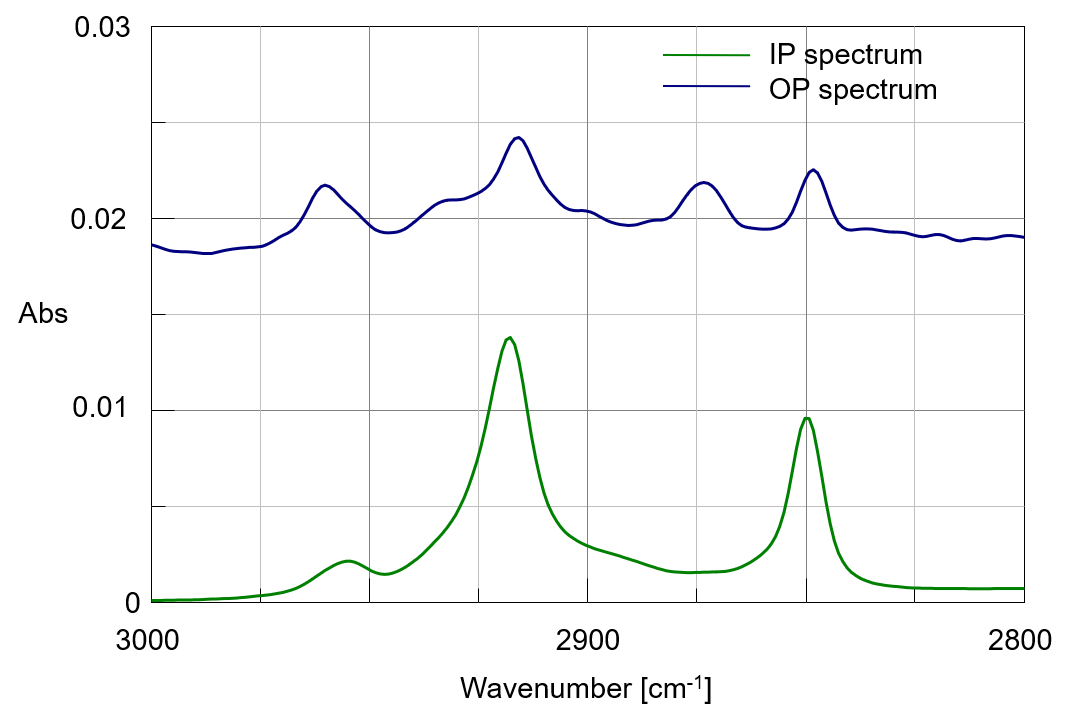
Figure 4. Calculated IP and OP spectra
The absorption at 2850 cm-1 (C-H symmetric stretch vibration of the methylene group) and at 2918 cm-1 (C-H inverse symmetric stretch vibration of the methylene group) were seen in IP and OP spectra, but these peak intensities are not the same. The peak of the absorption of the C-H inverse symmetric stretch vibration of the methylene group was seen at 2955 cm-1 in the IP spectrum, while it was shifted to 2961 cm-1 in the OP spectrum. In addition, the absorption at 2873 cm-1 (symmetric stretch vibration of methyl group) was observed only in the OP spectrum. Thus, it can be said that both IP and OP spectra corresponding to transmission and RAS spectra were obtained 5).
Conclusion
This system is very effective for the evaluation of the thin film samples in which the molecules are oriented in in-plane and out-of-plane directions. When the AM-4000 is used with a fully vacuum FTIR, high quality spectra can be measured without any effect of water vapor and carbon dioxide in shorter time than a purged system.
References
1) Hasegawa, T. J. Phys. Chem. B. 2002, 106, 4112-4115.
2) Hasegawa, T. et al., Anal. Chem. 2002, 74, 6049-6054.
3) Hasegawa, T. Anal. Chem. 2007, 79, 4385-4389.
4) Hasegawa, T. Appl. Spectrosc. Rev. 2008, 43, 181-201.
5) Umemura, J. et al., J. Phys. Chem. 1990, 94, 62-67.


